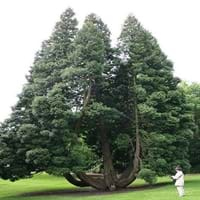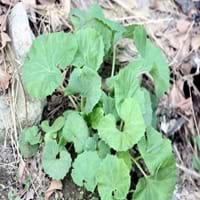Life Span
Perennial
Perennial
Type
Needled or Scaled Evergreen
Herbaceous Perennial
Origin
Northwestern United States, Canada
China, Japan, Korea
Types
Not available
Not Available
Habitat
Lowland, Moist Soils, Swamps
Lake Sides, River side
USDA Hardiness Zone
5-7
5-9
Sunset Zone
A3, 1a, 1b, 2a, 2b, 3a, 3b, 4, 5, 6, 7, 8, 9, 14, 15, 16, 17, 18, 19, 20, 21, 22, 23, 24
2a, 2b, 3a, 3b, 4, 5, 6, 7, 8, 9, 10, 14, 15, 16, 17, 18, 19, 20, 21, 22, 23, 24
Habit
Pyramidal
Clump-Forming
Flower Color
Light Yellow
Light Yellow, Ivory
Flower Color Modifier
Bicolor
Bicolor
Fruit Color
Brown, Sienna
Not Available
Leaf Color in Spring
Dark Green
Green
Leaf Color in Summer
Dark Green
Green
Leaf Color in Fall
Dark Green
Green
Leaf Color in Winter
Dark Green, Bronze
Not Available
Leaf Shape
Scale-like imbricate
Orbiculate
Plant Season
Spring, Summer, Fall, Winter
Spring, Summer, Fall
Sunlight
Full Sun, Partial Sun
Partial shade, Full Shade
Type of Soil
Loam
Clay, Loam, Sand
The pH of Soil
Acidic, Neutral
Acidic, Neutral, Alkaline
Soil Drainage
Well drained
Poorly Drained
Bloom Time
Spring
Early Spring, Late Winter
Tolerances
Pollution, Soil Compaction
Wet Site
Where to Plant?
Ground
Container, Ground
How to Plant?
Cuttings, Hardwood Cuttings, Rooted stem cutting, Seedlings
From Rhizomes
Plant Maintenance
Medium
Medium
Watering Requirements
Average Water Needs, Needs a lot of moisture in the growing season, when new, water every week
Keep ground moist, Requires consistently moist soil
In Summer
Lots of watering
Lots of watering
In Spring
Moderate
Moderate
In Winter
Average Water
Average Water
Soil pH
Acidic, Neutral, Alkaline
Acidic, Neutral, Alkaline
Soil Type
Clay, Loam, Sand
Clay, Loam, Sand
Soil Drainage Capacity
Well drained
Poorly Drained
Sun Exposure
Full Sun
Partial shade, Full Shade
Pruning
Remove damaged leaves, Remove dead branches, Remove dead leaves
Cut or pinch the stems, Remove damaged leaves, Remove dead branches, Remove dead leaves
Fertilizers
All-Purpose Liquid Fertilizer
All-Purpose Liquid Fertilizer, Requires high amount of nitrogen
Pests and Diseases
Armillaria root rot, Bark beetles
Red blotch
Plant Tolerance
Drought
Drought, Drought and Wet Site
Flowers
Insignificant
Showy
Flower Petal Number
Not Available
Not Available
Fragrant Bark/Stem
Yes
No
Foliage Texture
Fine
Bold
Foliage Sheen
Glossy
Glossy
Attracts
Not Available
Not Available
Allergy
Asthma, contact allergic dermatitis, Urticaria
Not Available
Aesthetic Uses
Not Used For Aesthetic Purpose
Beautification
Beauty Benefits
Not Available
Not Available
Environmental Uses
Air purification
Air purification
Medicinal Uses
Bronchitis, Cold, Cough, Fever, Sore throat
Antiasthamatic, Expectorant, Miscellany
Part of Plant Used
Branch, Inner Bark, Leaves, Wood
Flowers, Stem
Other Uses
Dugout canoes, Making deodorants, Medicinal oil, Paper pulp, Pulp can be used to make rope place mats and other goods, Used as an insecticide, Used to make baskets
Not Available
Used As Indoor Plant
No
No
Used As Outdoor Plant
Yes
Yes
Garden Design
Feature Plant, Hedges, Screening / Wind Break
Bog Garden, Container, Water Gardens
Botanical Name
THUJA plicata
PETASITES japonicus 'Argentea'
Common Name
Giant Arborvitae, Green Giant Arborvitae, Western Arborvitae, Western Red Cedar
Giant Butterbur, Japanese Butterbur, Variegated Butterbur
In Hindi
Pacific redcedar
Japanese Butterbur
In German
Riesen-Lebensbaum
japanische Pestwurz
In French
Thuja plicata
Japanese Butterbur
In Spanish
Thuja plicata
petasita japonesa
In Greek
Thuja plicata
Japanese Butterbur
In Portuguese
Thuja plicata
Carrapicho japonês
In Polish
Żywotnik olbrzymi
japoński Lepiężnik
In Latin
Thuja plicata
Japanese Butterbur
Phylum
Pinophyta
Tracheophyta
Class
Pinopsida
Magnoliopsida
Family
Cupressaceae
Asteraceae
Clade
Not Available
Angiosperms, Asterids, Eudicots
Tribe
Not Available
Not Available
Subfamily
Not Available
Not Available
Number of Species
Not Available
Not Available
Importance of Western Red Cedar and Japanese Butterbur
Want to have the most appropriate plant for your garden? You might want to know the importance of Western Red Cedar and Japanese Butterbur. Basically, these two plants vary in many aspects. Compare Western Red Cedar and Japanese Butterbur as they differ in many characteristics such as their life, care, benefits, facts, etc. Every gardener must at least have the slightest clue about the plants he wants to plant in his garden. Compare their benefits, which differ in many ways like facts and uses. The medicinal use of Western Red Cedar is Bronchitis, Cold, Cough, Fever and Sore throat whereas of Japanese Butterbur is Antiasthamatic, Expectorant and Miscellany. Western Red Cedar has beauty benefits as follows: Not Available while Japanese Butterbur has beauty benefits as follows: Not Available.
Compare Facts of Western Red Cedar vs Japanese Butterbur
How to choose the best garden plant for your garden depending upon its facts? Here garden plant comparison will help you to solve this query. Compare the facts of Western Red Cedar vs Japanese Butterbur and know which one to choose. As garden plants have benefits and other uses, allergy is also a major drawback of plants for some people. Allergic reactions of Western Red Cedar are Asthma, contact allergic dermatitis and Urticaria whereas of Japanese Butterbur have Not Available respectively. Having a fruit bearing plant in your garden can be a plus point of your garden. Western Red Cedar has no showy fruits and Japanese Butterbur has no showy fruits. Also Western Red Cedar is not flowering and Japanese Butterbur is not flowering . You can compare Western Red Cedar and Japanese Butterbur facts and facts of other plants too.





